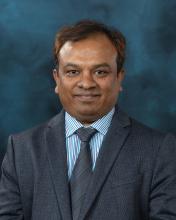
Md “Arif” Arifuzzaman
Md "Arif" Arifuzzaman is the founder of Re-Du with more than 10 years of experience in synthetic chemistry, with a major focus on catalyst development and optimization, polymer deconstruction,…

Md “Arif” Arifuzzaman
Re-Du
Md "Arif" Arifuzzaman is the founder of Re-Du with more than 10 years of experience in synthetic chemistry, with a major focus on catalyst development and optimization, polymer deconstruction, polymer upcycling, novel recyclable polymers, and more. He and his team developed an exceptionally efficient organocatalyst that can readily deconstruct various condensation polymers and their vast array of mixed plastic wastes into valuable chemicals. He furthered his knowledge on commercialization of his technology by participating in the DOE’s Energy I-Corps program and ORNL’s I-Corps Lite. Both programs assisted him in developing a strategy for taking his idea and technology to market. Arif’s research has resulted in 20 peer-reviewed articles, a submitted nonprovisional international patent on mixed plastic deconstruction, a graduate research excellence award. Arif received his PhD in organic chemistry from Iowa State University and an MS from Tennessee State University.

Project Abstract
Approximately 80% of more than 400 megatonnes of plastics produced annually are wasted, losing approximately $100 billion annually. To combat the widespread problem of plastic waste, he and his mentor at ORNL invented an effective organocatalyst no. 18/096,849, filed on 13 January 2023, that can convert various types of plastics (polyethylene terephthalate [PET], polycarbonate [PC], polyurethane [PU], polyamide [PA]) that are used as bottles, carpets, textiles, packaging, foams, and more into marketable chemicals. This technology can deconstruct PET, PC, PU, and PA selectively, while keeping other types of commodity plastics, such as polyethylene (PE) and polypropylene (PP), intact. The customer discovery process during Energy I-Corps programs clearly indicated that this advanced technology has the potential to impact the world. Re-Du has been launched as a startup company and has licensed the IP from ORNL based on the deconstruction technology to convert plastic wastes into useful chemicals. The technology transforms currently unrecyclable plastic wastes to valuable resources, lessens the need for crude oil and reduces greenhouse gas emissions in producing plastics.
We Are Looking For
- Cost effective plastic waste management
- Strategic partnerships with plastic manufacturer and waste management companies
- Funding
- Long-term vision for a carbon neutral world
Critical Need for This Technology
- Scale up technology from the lab to pilot scale to process commercial wastes, which will validate and de-risk a large-scale commercial operation in the future.
- Identify economically viable feedstocks and optimizing reaction conditions to scale up waste processing and monomer production with favorable techno-economic and life cycle assessment findings.
- Establish purchasing agreements with companies to buy our monomers that are close to price parity with fossil fuel-based monomers.
Competition
Right now, the most widely recycled method is mechanical recycling, but it can only recycle one type of very clean plastic at a time and recycled plastics typically have down-graded properties. Another new competing recycle technology is pyrolysis, but it uses significant energy to pyrolyze plastics into fuels. Compared to pyrolysis and mechanical recycling, our process can process wide variety of plastics even mixed, obtain clean chemicals (not down-graded plastics), have lower energy consumption, with few byproducts and significantly reduced greenhouse gas emission.
Key Innovation
Re-Du provides groundbreaking recycling solutions, including the chemical deconstruction of mixed plastics into valuable raw materials. The technology enables the efficient and effective repurposing of currently non-recyclable mixed plastic wastes, reducing the need for fossil fuels.
R&D Status of Product
Re-Du is in the R&D and product development stage. Proof of concept has been demonstrated against different industrial and commercial waste such as bottles, packaging, foams, mattresses, car seats, protective gear, plastic lenses, automotive components, textiles, fishing gears, and carpets, etc. Re-Du will continue R&D to de-risk the technology toward large-scale deployment, especially understanding the kinetics and engineering required to scale our process from bench to pilot and then to commercial scale.
Team Overview
- Md Arifuzzaman – Founder and Chief Executive Officer
ORNL PI
- Tomonori Saito – Synthetic Polymer Chemist, Physical Sciences Directorate
Md "Arif" Arifuzzaman is the founder of Re-Du with more than 10 years of experience in synthetic chemistry, with a major focus on catalyst development and optimization, polymer deconstruction, polymer upcycling, novel recyclable polymers, and more. He and his team developed an exceptionally efficient organocatalyst that can readily deconstruct various condensation polymers and their vast array of mixed plastic wastes into valuable chemicals. He furthered his knowledge on commercialization of his technology by participating in the DOE’s Energy I-Corps program and ORNL’s I-Corps Lite. Both programs assisted him in developing a strategy for taking his idea and technology to market. Arif’s research has resulted in 20 peer-reviewed articles, a submitted nonprovisional international patent on mixed plastic deconstruction, a graduate research excellence award. Arif received his PhD in organic chemistry from Iowa State University and an MS from Tennessee State University.

Project Abstract
Approximately 80% of more than 400 megatonnes of plastics produced annually are wasted, losing approximately $100 billion annually. To combat the widespread problem of plastic waste, he and his mentor at ORNL invented an effective organocatalyst no. 18/096,849, filed on 13 January 2023, that can convert various types of plastics (polyethylene terephthalate [PET], polycarbonate [PC], polyurethane [PU], polyamide [PA]) that are used as bottles, carpets, textiles, packaging, foams, and more into marketable chemicals. This technology can deconstruct PET, PC, PU, and PA selectively, while keeping other types of commodity plastics, such as polyethylene (PE) and polypropylene (PP), intact. The customer discovery process during Energy I-Corps programs clearly indicated that this advanced technology has the potential to impact the world. Re-Du has been launched as a startup company and has licensed the IP from ORNL based on the deconstruction technology to convert plastic wastes into useful chemicals. The technology transforms currently unrecyclable plastic wastes to valuable resources, lessens the need for crude oil and reduces greenhouse gas emissions in producing plastics.
We Are Looking For
- Cost effective plastic waste management
- Strategic partnerships with plastic manufacturer and waste management companies
- Funding
- Long-term vision for a carbon neutral world
Critical Need for This Technology
- Scale up technology from the lab to pilot scale to process commercial wastes, which will validate and de-risk a large-scale commercial operation in the future.
- Identify economically viable feedstocks and optimizing reaction conditions to scale up waste processing and monomer production with favorable techno-economic and life cycle assessment findings.
- Establish purchasing agreements with companies to buy our monomers that are close to price parity with fossil fuel-based monomers.
Competition
Right now, the most widely recycled method is mechanical recycling, but it can only recycle one type of very clean plastic at a time and recycled plastics typically have down-graded properties. Another new competing recycle technology is pyrolysis, but it uses significant energy to pyrolyze plastics into fuels. Compared to pyrolysis and mechanical recycling, our process can process wide variety of plastics even mixed, obtain clean chemicals (not down-graded plastics), have lower energy consumption, with few byproducts and significantly reduced greenhouse gas emission.
Key Innovation
Re-Du provides groundbreaking recycling solutions, including the chemical deconstruction of mixed plastics into valuable raw materials. The technology enables the efficient and effective repurposing of currently non-recyclable mixed plastic wastes, reducing the need for fossil fuels.
R&D Status of Product
Re-Du is in the R&D and product development stage. Proof of concept has been demonstrated against different industrial and commercial waste such as bottles, packaging, foams, mattresses, car seats, protective gear, plastic lenses, automotive components, textiles, fishing gears, and carpets, etc. Re-Du will continue R&D to de-risk the technology toward large-scale deployment, especially understanding the kinetics and engineering required to scale our process from bench to pilot and then to commercial scale.
Team Overview
- Md Arifuzzaman – Founder and Chief Executive Officer
ORNL PI
- Tomonori Saito – Synthetic Polymer Chemist, Physical Sciences Directorate
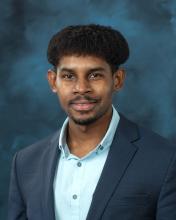
Shantonio Birch
Shantonio Birch is a first-generation college student, an immigrant, and a recent Mechanical Engineering PhD graduate from the University of Michigan, Ann Arbor. Shantonio’s journey as a climate tech…

Shantonio Birch
ThermoVerse
Shantonio Birch is a first-generation college student, an immigrant, and a recent Mechanical Engineering PhD graduate from the University of Michigan, Ann Arbor. Shantonio’s journey as a climate tech entrepreneur began at the Perimeter College at Georgia State University, where he made the decision to pursue an engineering degree to mitigate the threats of rising sea temperatures on coral reefs in the Caribbean. He later got involved in climate tech research through numerous summer research experiences for undergraduates (REUs), then transferred to the Georgia Institute of Technology, where he completed a Bachelors of Science degree in Mechanical Engineering.
Shantonio is passionate about clean energy and has been a lifelong champion for energy equity and environmental justice. As part of his PhD dissertation, he has laid the foundation for tackling a decades-old stalemate on the room temperature performance of thermoelectric materials, and has recently transitioned into the entrepreneurial ecosystem in Ann Arbor, where he is the CEO and Founder of the climate-tech startup known as ThermoVerse. Shantonio seeks to use tech as an engine for social good and sees entrepreneurship as a route for achieving this. His upbringing as an immigrant, a community college student, a first-generation college student, and now the first person in his family to bear the title “Dr.” has not only shaped his idea of impact but has also humbled him in his pursuit of a cleaner and more sustainable future for all.

Project Abstract
ThermoVerse, LLC is developing a minimally invasive envelope thermal management system to address the decarbonization of buildings and their communities. This solution addresses the need for cost-effective and sensible heating and cooling in >40 million low-to-middle-income U.S. households and is timely as existing retrofits tend to either breach old building codes or exacerbate inequities within underserved communities concerning the pricing and allocation of energy resources.
We Are Looking For
- Skilled material scientist(s) and controls engineer(s)
- Strategic investment and pilot partners
- Funding opportunities, both private and governmental
- Interns
Critical Need for This Technology
The U.S. Department of Energy (DOE) has a goal to reduce the carbon footprint of U.S. buildings, transportation, agriculture and industry by 50% by 2030. Consistent with this goal, our team is developing a minimally invasive envelope thermal management system that could improve HVAC controls and thermal management in a wide range of enclosure systems. This innovation is timely as space heating and cooling comprise approximately 12-25% of global energy consumption and contribute to 40% of global carbon emissions. Furthermore, without such radical undertakings, existing efforts to electrify and transition our global energy infrastructure may prove harmful to already disadvantaged populations who are bearing the brunt of disproportionate energy burdens associated with energy reduction, urban heat islands, and extreme weather (e.g., deep freeze and heat waves).
Competition
A primary benefit of our technology is that it provides heating, cooling and thermal insulation without having to open up the walls. Furthermore, it sits on top of all existing energy reduction measures and technological interventions sought to decarbonize or electrify residential heating and cooling. It can therefore be used to improve the efficacy of all pre-existing and newly installed HVAC retrofits without violating existing building codes.
Key Innovation
Our technology is being developed to address the energy efficiency and equity considerations within the constraints of old building codes, which require non-invasive retrofits.
R&D Status of Product
A simple embodiment proof-of concept prototype of our technology has been developed. We are currently working to scale this technology across multiple technological verticals, beginning with high-valued, temperature-sensitive small enclosure systems and ending with buildings.
Team Overview
- Shantonio Birch – Founder and Chief Executive Officer
ORNL PI
- Kyle Gluesenkamp – Senior R&D Staff, Thermal Energy Storage Energy Science and Technology Directorate
- Som Shrestha – Senior R&D Staff, Building Envelope Materials Research, Energy Science and Technology Directorate
Shantonio Birch is a first-generation college student, an immigrant, and a recent Mechanical Engineering PhD graduate from the University of Michigan, Ann Arbor. Shantonio’s journey as a climate tech entrepreneur began at the Perimeter College at Georgia State University, where he made the decision to pursue an engineering degree to mitigate the threats of rising sea temperatures on coral reefs in the Caribbean. He later got involved in climate tech research through numerous summer research experiences for undergraduates (REUs), then transferred to the Georgia Institute of Technology, where he completed a Bachelors of Science degree in Mechanical Engineering.
Shantonio is passionate about clean energy and has been a lifelong champion for energy equity and environmental justice. As part of his PhD dissertation, he has laid the foundation for tackling a decades-old stalemate on the room temperature performance of thermoelectric materials, and has recently transitioned into the entrepreneurial ecosystem in Ann Arbor, where he is the CEO and Founder of the climate-tech startup known as ThermoVerse. Shantonio seeks to use tech as an engine for social good and sees entrepreneurship as a route for achieving this. His upbringing as an immigrant, a community college student, a first-generation college student, and now the first person in his family to bear the title “Dr.” has not only shaped his idea of impact but has also humbled him in his pursuit of a cleaner and more sustainable future for all.

Project Abstract
ThermoVerse, LLC is developing a minimally invasive envelope thermal management system to address the decarbonization of buildings and their communities. This solution addresses the need for cost-effective and sensible heating and cooling in >40 million low-to-middle-income U.S. households and is timely as existing retrofits tend to either breach old building codes or exacerbate inequities within underserved communities concerning the pricing and allocation of energy resources.
We Are Looking For
- Skilled material scientist(s) and controls engineer(s)
- Strategic investment and pilot partners
- Funding opportunities, both private and governmental
- Interns
Critical Need for This Technology
The U.S. Department of Energy (DOE) has a goal to reduce the carbon footprint of U.S. buildings, transportation, agriculture and industry by 50% by 2030. Consistent with this goal, our team is developing a minimally invasive envelope thermal management system that could improve HVAC controls and thermal management in a wide range of enclosure systems. This innovation is timely as space heating and cooling comprise approximately 12-25% of global energy consumption and contribute to 40% of global carbon emissions. Furthermore, without such radical undertakings, existing efforts to electrify and transition our global energy infrastructure may prove harmful to already disadvantaged populations who are bearing the brunt of disproportionate energy burdens associated with energy reduction, urban heat islands, and extreme weather (e.g., deep freeze and heat waves).
Competition
A primary benefit of our technology is that it provides heating, cooling and thermal insulation without having to open up the walls. Furthermore, it sits on top of all existing energy reduction measures and technological interventions sought to decarbonize or electrify residential heating and cooling. It can therefore be used to improve the efficacy of all pre-existing and newly installed HVAC retrofits without violating existing building codes.
Key Innovation
Our technology is being developed to address the energy efficiency and equity considerations within the constraints of old building codes, which require non-invasive retrofits.
R&D Status of Product
A simple embodiment proof-of concept prototype of our technology has been developed. We are currently working to scale this technology across multiple technological verticals, beginning with high-valued, temperature-sensitive small enclosure systems and ending with buildings.
Team Overview
- Shantonio Birch – Founder and Chief Executive Officer
ORNL PI
- Kyle Gluesenkamp – Senior R&D Staff, Thermal Energy Storage Energy Science and Technology Directorate
- Som Shrestha – Senior R&D Staff, Building Envelope Materials Research, Energy Science and Technology Directorate
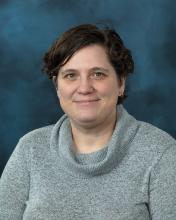
Sarah Jordan
Founder and CEO, Sarah Jordan, started Skuld LLC to merge 3D printing with lost foam investment casting, the greenest casting method. She is passionate about metals innovation and creating more…

Sarah Jordan
Skuld
Founder and CEO, Sarah Jordan, started Skuld LLC to merge 3D printing with lost foam investment casting, the greenest casting method. She is passionate about metals innovation and creating more efficient manufacturing processes. She has worked in additive manufacturing since 2015 and is a member of the America Makes Process Working Group and the Additive Manufacturing Users Group. She founded the Dayton chapter of Women in 3D Printing. Sarah has a BS in Metallurgical Engineering and an MS in Materials Science and Engineering from Ohio State University and an MBA from Carnegie Mellon University. She is currently also working part time on her PhD in Manufacturing Engineering at Worcester Polytechnic Institute with her dissertation focused on AMEC for 356 aluminum.

Project Abstract
Skuld has three patents pending on their new manufacturing process called additive manufacturing evaporative casting (AMEC). AMEC joins together the capabilities of lost foam casting (a type of precision investment casting) and 3D printing of polymers. Compared with alternative AM processes, AMEC is faster, is capable of creating larger parts with precision tolerances, is less expensive, and has known microstructures for ease of part qualification. A basic proof of concept has been shown in a variety of metals. Skuld recently completed a US Department of Defense Small Business Innovation Research project to demonstrate AMEC in aluminum and an America Makes project to develop the process for Inconel alloys. Skuld is also working on several commercial prototypes. In September 2023 they are launching a machine, Lightning Metal™, to allow others to utilize the process.
This project is to further develop AMEC so that it can be more rapidly commercialized. The ultimate goal is to develop a metal additive process that is more broadly competitive with traditional manufacturing processes while providing the design and supply chain flexibility of AM. The project objectives include determination of design capabilities, materials characterization of additional alloys, and computational modeling.
We Are Looking For
- Early adopters who would like to try their components using AMEC whether it is for replacement parts, prototypes, low volume production parts, or tooling.
- Engineers and Designers who want affordable additive manufacturing.
- Foundries interested in licensing the AMEC process.
- Non-foundries interested in the Lightning Metal™ system.
- Government and private funding.
Critical Need for This Technology
Manufacturing is always seeking improved means of manufacturing that provide products faster and more efficiently. Just some of the issues include:
- Conventional manufacturing is limited in possible geometries which causes inefficient, heavy designs that waste energy.
- There are long lead times for castings with 12+ weeks being the norm.
- Tooling takes too long and costs too much.
- Sand casting is only accurate to 3% and requires extensive machining.
- Investment casting takes several weeks of process time.
- Direct metal additive manufacturing costs 10-100X as much as conventional manufacturing and is difficult to qualify.
Competition
Direct Competition:
- Tesseract4D
Indirect competition:
- Conventional manufacturing from foundries, machine shops, welding, and stamping.
- Additive manufacturing from direct metal processes or other additive casting methods. Competitors include 3D Systems, Stratasys, and Desktop Metal.
Key Innovation
By combining polymer 3D printing with lost foam investment casting, Skuld can eliminate the need for tooling, make parts in as little as 12 hours, permits the complex shapes of additive manufacturing, has 0.3% tolerances, and results in the same material as conventional manufacturing making it easier to qualify.
R&D Status of Product
Skuld has demonstrated the process in a wide range of metals including aluminum, brass, copper, iron, steel, and nickel. Tooling for drawn over mandrel tube forming is currently at life testing and several other tooling projects are in the quoting phase for demonstration purposes. The Lightning Metal™ is currently being designed and built.
Team Overview
- Sarah Jordan – Co-Founder and Chief Executive Officer
- Mark DeBruin – Co-Founder and Chief Technology Officer
- Adam Fasnacht – Senior Additive Engineer
- Todd McDonald – Sales
ORNL PI
- Thomas Muth – Group Member, Metal and Composites Processing, Physical Sciences Directorate
- Adrian Sabau – Computational Materials Scientist, Computing and Computational Sciences Directorate
Founder and CEO, Sarah Jordan, started Skuld LLC to merge 3D printing with lost foam investment casting, the greenest casting method. She is passionate about metals innovation and creating more efficient manufacturing processes. She has worked in additive manufacturing since 2015 and is a member of the America Makes Process Working Group and the Additive Manufacturing Users Group. She founded the Dayton chapter of Women in 3D Printing. Sarah has a BS in Metallurgical Engineering and an MS in Materials Science and Engineering from Ohio State University and an MBA from Carnegie Mellon University. She is currently also working part time on her PhD in Manufacturing Engineering at Worcester Polytechnic Institute with her dissertation focused on AMEC for 356 aluminum.

Project Abstract
Skuld has three patents pending on their new manufacturing process called additive manufacturing evaporative casting (AMEC). AMEC joins together the capabilities of lost foam casting (a type of precision investment casting) and 3D printing of polymers. Compared with alternative AM processes, AMEC is faster, is capable of creating larger parts with precision tolerances, is less expensive, and has known microstructures for ease of part qualification. A basic proof of concept has been shown in a variety of metals. Skuld recently completed a US Department of Defense Small Business Innovation Research project to demonstrate AMEC in aluminum and an America Makes project to develop the process for Inconel alloys. Skuld is also working on several commercial prototypes. In September 2023 they are launching a machine, Lightning Metal™, to allow others to utilize the process.
This project is to further develop AMEC so that it can be more rapidly commercialized. The ultimate goal is to develop a metal additive process that is more broadly competitive with traditional manufacturing processes while providing the design and supply chain flexibility of AM. The project objectives include determination of design capabilities, materials characterization of additional alloys, and computational modeling.
We Are Looking For
- Early adopters who would like to try their components using AMEC whether it is for replacement parts, prototypes, low volume production parts, or tooling.
- Engineers and Designers who want affordable additive manufacturing.
- Foundries interested in licensing the AMEC process.
- Non-foundries interested in the Lightning Metal™ system.
- Government and private funding.
Critical Need for This Technology
Manufacturing is always seeking improved means of manufacturing that provide products faster and more efficiently. Just some of the issues include:
- Conventional manufacturing is limited in possible geometries which causes inefficient, heavy designs that waste energy.
- There are long lead times for castings with 12+ weeks being the norm.
- Tooling takes too long and costs too much.
- Sand casting is only accurate to 3% and requires extensive machining.
- Investment casting takes several weeks of process time.
- Direct metal additive manufacturing costs 10-100X as much as conventional manufacturing and is difficult to qualify.
Competition
Direct Competition:
- Tesseract4D
Indirect competition:
- Conventional manufacturing from foundries, machine shops, welding, and stamping.
- Additive manufacturing from direct metal processes or other additive casting methods. Competitors include 3D Systems, Stratasys, and Desktop Metal.
Key Innovation
By combining polymer 3D printing with lost foam investment casting, Skuld can eliminate the need for tooling, make parts in as little as 12 hours, permits the complex shapes of additive manufacturing, has 0.3% tolerances, and results in the same material as conventional manufacturing making it easier to qualify.
R&D Status of Product
Skuld has demonstrated the process in a wide range of metals including aluminum, brass, copper, iron, steel, and nickel. Tooling for drawn over mandrel tube forming is currently at life testing and several other tooling projects are in the quoting phase for demonstration purposes. The Lightning Metal™ is currently being designed and built.
Team Overview
- Sarah Jordan – Co-Founder and Chief Executive Officer
- Mark DeBruin – Co-Founder and Chief Technology Officer
- Adam Fasnacht – Senior Additive Engineer
- Todd McDonald – Sales
ORNL PI
- Thomas Muth – Group Member, Metal and Composites Processing, Physical Sciences Directorate
- Adrian Sabau – Computational Materials Scientist, Computing and Computational Sciences Directorate
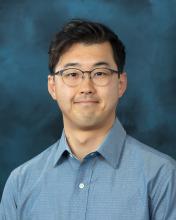
Daniel Lee
Daniel Lee did his postdoctoral studies at Stanford University, has a PhD in molecular engineering from the University of Washington, and a BS in chemistry from Cornell University. His work focuses…

Daniel Lee
Perseus Materials
Daniel Lee did his postdoctoral studies at Stanford University, has a PhD in molecular engineering from the University of Washington, and a BS in chemistry from Cornell University. His work focuses on the syntheses and applications of new polymer materials and reflects his aspirations to use technology to unlock new fields of engineering. Before his PhD, Daniel worked as a member of the enhanced problem-solving team at Shell Chemical LP doing root cause analyses for large reliability failures. Daniel co-founded Perseus Materials, Inc. with John Feist in 2022 and currently serves as CEO.

Project Abstract
Perseus Materials is a seed-stage company revolutionizing the manufacturing of oversize high-performance fiber-reinforced polymer composites (FRPs) to displace steel and aluminum in many infrastructure applications. Perseus innovates resin process chemistry and adapts them into new, efficient, manufacturing methods for oversize FRPs. Perseus’ processes allow manufacturers to build faster, cheaper, and anywhere, even on-site.
We will focus on wind turbine blades and later expand to other oversize infrastructure parts like bridges, long-term storage tanks, marine vessels, and wastewater digesters. Growth of the wind energy market is throttled by slow turbine blade production, challenging offshore blade installation, limited blade lifetimes, and the emerging problem of blade disposal. With Perseus, our customers will produce FRP wind turbine blades faster, cheaper, and more reliably. Additionally, Perseus’ blades are built with end-of-life solutions in mind: the blades can be recycled with existing and new processes.
We Are Looking For
- New team members
- Strategic partners
- Advisors
Critical Need for This Technology
More efficient manufacturing processes for fiber-reinforced polymer composites is critical for their mainstream adoption as alternatives to steel and aluminum. Lowering the cost of FRP parts is particularly important for wind energy, as it competes against many sources of energy production.
Competition
Steel, traditional manufacturing
Key Innovation
Perseus develops innovative chemistries that defy the fundamental limitations that exist in FRP manufacturing today.
R&D Status of Product
Perseus is demonstrating proof-of-concept of their innovative processes.
Team Overview
- Daniel Lee – Co-founder and Chief Executive Officer
- John Feist – Co-founder and Chief Technology Officer
ORNL PI
- Vlastimil Kunc – Section Head, Composites Science and Technology, Manufacturing Services Division, Energy Science and Technology Directorate
Daniel Lee did his postdoctoral studies at Stanford University, has a PhD in molecular engineering from the University of Washington, and a BS in chemistry from Cornell University. His work focuses on the syntheses and applications of new polymer materials and reflects his aspirations to use technology to unlock new fields of engineering. Before his PhD, Daniel worked as a member of the enhanced problem-solving team at Shell Chemical LP doing root cause analyses for large reliability failures. Daniel co-founded Perseus Materials, Inc. with John Feist in 2022 and currently serves as CEO.

Project Abstract
Perseus Materials is a seed-stage company revolutionizing the manufacturing of oversize high-performance fiber-reinforced polymer composites (FRPs) to displace steel and aluminum in many infrastructure applications. Perseus innovates resin process chemistry and adapts them into new, efficient, manufacturing methods for oversize FRPs. Perseus’ processes allow manufacturers to build faster, cheaper, and anywhere, even on-site.
We will focus on wind turbine blades and later expand to other oversize infrastructure parts like bridges, long-term storage tanks, marine vessels, and wastewater digesters. Growth of the wind energy market is throttled by slow turbine blade production, challenging offshore blade installation, limited blade lifetimes, and the emerging problem of blade disposal. With Perseus, our customers will produce FRP wind turbine blades faster, cheaper, and more reliably. Additionally, Perseus’ blades are built with end-of-life solutions in mind: the blades can be recycled with existing and new processes.
We Are Looking For
- New team members
- Strategic partners
- Advisors
Critical Need for This Technology
More efficient manufacturing processes for fiber-reinforced polymer composites is critical for their mainstream adoption as alternatives to steel and aluminum. Lowering the cost of FRP parts is particularly important for wind energy, as it competes against many sources of energy production.
Competition
Steel, traditional manufacturing
Key Innovation
Perseus develops innovative chemistries that defy the fundamental limitations that exist in FRP manufacturing today.
R&D Status of Product
Perseus is demonstrating proof-of-concept of their innovative processes.
Team Overview
- Daniel Lee – Co-founder and Chief Executive Officer
- John Feist – Co-founder and Chief Technology Officer
ORNL PI
- Vlastimil Kunc – Section Head, Composites Science and Technology, Manufacturing Services Division, Energy Science and Technology Directorate
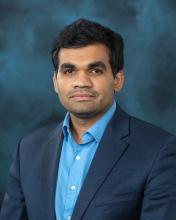
Manas Pathak
Manas Pathak is the co-founder and CEO of EarthEn. He was born in India, where he grew up, and later attended the Indian Institute of Technology for his undergraduate in Geosciences. He went on to…

Manas Pathak
EarthEn
Manas Pathak is the co-founder and CEO of EarthEn. He was born in India, where he grew up, and later attended the Indian Institute of Technology for his undergraduate in Geosciences. He went on to continue his education at the University of Utah, earning his Ph.D. and MS in Chemical Engineering. He won numerous accolades and awards such as the Society of Petroleum Engineers’ Star fellowship and met Dr. Palash Panja (now CTO of EarthEn) during his time there. After graduation, he worked at a global semiconductor where he spent six years in different roles from process engineering to leading several teams in areas of global energy, artificial intelligence, corporate strategy, and business development. Later, he founded EarthEn during his time at Arizona State University while pursuing MBA.

Project Abstract
EarthEn uses hardware and software to enable clean and renewable energy 24/7. EarthEn develops thermo-mechanical, flexible, and future-proof long-duration energy storage that uses CO2 in a closed loop to potentially store 4 to over 100 hours of energy in a low-cost, highly scalable, and safe manner with a 30-year lifetime. EarthEn’s software tools leverage artificial intelligence and machine learning to optimize peak demand pricing, enable grid resiliency, and increase the grid’s cybersecurity.
At ORNL, EarthEn intends to progress the technology readiness level of their patented long-duration energy storage solution. Additionally, the team will conduct RD&D to reduce the capex of their subsystems to meet the DOE cost target of $50/MWh Levelized Cost of Storage (LCOS). Their energy storage solution is the synthesis of a novel CO2–based thermal and mechanical energy storage concept that is combined with EarthEn’s patented invention of conversion of stored energy to electricity. Excess energy from solar and wind when present is used to compress CO2 and is stored in thermal and mechanical forms. The stored energy is converted back to electricity by spinning turbines.
We Are Looking For
Partners to help us reduce the capital cost of equipment and customers for the pilot.
Critical Need for This Technology
Reduced cost of equipment like heat exchangers, turbomachinery, and high-pressure tanks.
Competition
Li-ion batteries, compressed air energy storage, gravity-based energy storage, and redox flow batteries.
Key Innovation
A hybrid thermo-mechanical form of energy storage using CO2
R&D Status of Product
TRL 4
Team Overview
- Manas Pathak – Co-Founder and Chief Executive Officer
- Palash Panja – Chief Technology Officer
- Karthi Chakravarty – Chief Operations Officer
ORNL PI
- Kevin Robb – Group Leader, Energy Systems Development, Fusion and Fission Energy and Science Directorate
Manas Pathak is the co-founder and CEO of EarthEn. He was born in India, where he grew up, and later attended the Indian Institute of Technology for his undergraduate in Geosciences. He went on to continue his education at the University of Utah, earning his Ph.D. and MS in Chemical Engineering. He won numerous accolades and awards such as the Society of Petroleum Engineers’ Star fellowship and met Dr. Palash Panja (now CTO of EarthEn) during his time there. After graduation, he worked at a global semiconductor where he spent six years in different roles from process engineering to leading several teams in areas of global energy, artificial intelligence, corporate strategy, and business development. Later, he founded EarthEn during his time at Arizona State University while pursuing MBA.

Project Abstract
EarthEn uses hardware and software to enable clean and renewable energy 24/7. EarthEn develops thermo-mechanical, flexible, and future-proof long-duration energy storage that uses CO2 in a closed loop to potentially store 4 to over 100 hours of energy in a low-cost, highly scalable, and safe manner with a 30-year lifetime. EarthEn’s software tools leverage artificial intelligence and machine learning to optimize peak demand pricing, enable grid resiliency, and increase the grid’s cybersecurity.
At ORNL, EarthEn intends to progress the technology readiness level of their patented long-duration energy storage solution. Additionally, the team will conduct RD&D to reduce the capex of their subsystems to meet the DOE cost target of $50/MWh Levelized Cost of Storage (LCOS). Their energy storage solution is the synthesis of a novel CO2–based thermal and mechanical energy storage concept that is combined with EarthEn’s patented invention of conversion of stored energy to electricity. Excess energy from solar and wind when present is used to compress CO2 and is stored in thermal and mechanical forms. The stored energy is converted back to electricity by spinning turbines.
We Are Looking For
Partners to help us reduce the capital cost of equipment and customers for the pilot.
Critical Need for This Technology
Reduced cost of equipment like heat exchangers, turbomachinery, and high-pressure tanks.
Competition
Li-ion batteries, compressed air energy storage, gravity-based energy storage, and redox flow batteries.
Key Innovation
A hybrid thermo-mechanical form of energy storage using CO2
R&D Status of Product
TRL 4
Team Overview
- Manas Pathak – Co-Founder and Chief Executive Officer
- Palash Panja – Chief Technology Officer
- Karthi Chakravarty – Chief Operations Officer
ORNL PI
- Kevin Robb – Group Leader, Energy Systems Development, Fusion and Fission Energy and Science Directorate
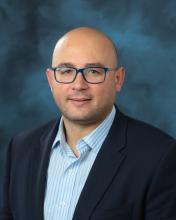
Marouane Salhi
Marouane Salhi is the co-founder and CEO of Qubit Engineering Inc., a quantum computing-based venture for the development of new optimization tools to be utilized by the wind energy industry. He…

Marouane Salhi
Qubit Engineering
Marouane Salhi is the co-founder and CEO of Qubit Engineering Inc., a quantum computing-based venture for the development of new optimization tools to be utilized by the wind energy industry. He obtained his PhD in computational and theoretical physics from the University of Tennessee, Knoxville, followed by a postdoctoral research fellowship position with the intelligence community at ORNL, before joining the Creative Destruction Lab incubator program in 2018 at the University of Toronto Canada. His mission is to develop innovative quantum optimization algorithms to design wind farms with higher annual energy production and lower cost.

Project Abstract
Qubit Engineering is at the forefront of quantum optimization algorithms, revolutionizing the design of onshore and offshore wind farms. Their innovative quantum approach tackles the complexity of this task, outperforming traditional methods. As part of the Innovation Crossroads program, they focus on refining wind farm layout optimization while exploring new challenges in the electric grid domain. Going beyond wind farms, their creative and forward-thinking team aims to solve complex problems throughout the energy sector. By pushing the boundaries of quantum computing and developing hybrid quantum-classical solvers, Qubit Engineering is set to transform how the industry approaches optimization. With their unwavering commitment to innovation, they are paving the way for a greener and more efficient energy landscape.
We Are Looking For
- Investment to advance quantum optimization technology for the energy sector.
- New optimization projects, onshore and offshore wind farm.
- Partnerships with energy companies for optimization solutions.
- Funding opportunities: Qubit Engineering is gearing up to initiate a seed round investment in the coming months.
Critical Need for This Technology
The optimization technology developed by Qubit Engineering holds immense significance in addressing the evolving needs of industries, especially the energy sector. As classical optimization approaches struggled to capture higher quality results necessary for growth and sustainability, the demand for a new and innovative way of handling these challenges emerged. Qubit Engineering's cutting-edge methods have filled this void, introducing fresh approaches that push the boundaries of what is achievable. Their advancements are revolutionizing problem-solving, empowering industries to unlock new levels of efficiency and success.
Competition
- UL Renewables
- DNV-GL
Key Innovation
Qubit Engineering's key innovation is their quantum-based wind farm optimization system, driving unmatched efficiency and accuracy in layout design to maximize energy production while reducing costs. Moreover, the same quantum approach holds promise for diverse applications within the energy sector, opening new avenues for sustainable advancements.
R&D Status of Product
Qubit Engineering's has developed an innovative wind farm optimization software based on quantum formulation approach. The system is actively employed by their team to optimize wind farm layouts for clients, onshore and offshore ones.
Team Overview
- Marouane Salhi – Co-founder and Chief Executive Officer
- George Siopsis – Co-founder and Scientific Advisor
- Hatem Eldakhakhni – Co-founder and Chief Technology Officer
- Gijs van der Hulst – Business Development
ORNL PI
- Travis Humble – Director, Quantum Science Center, Computing and Computational Sciences Directorate
Marouane Salhi is the co-founder and CEO of Qubit Engineering Inc., a quantum computing-based venture for the development of new optimization tools to be utilized by the wind energy industry. He obtained his PhD in computational and theoretical physics from the University of Tennessee, Knoxville, followed by a postdoctoral research fellowship position with the intelligence community at ORNL, before joining the Creative Destruction Lab incubator program in 2018 at the University of Toronto Canada. His mission is to develop innovative quantum optimization algorithms to design wind farms with higher annual energy production and lower cost.

Project Abstract
Qubit Engineering is at the forefront of quantum optimization algorithms, revolutionizing the design of onshore and offshore wind farms. Their innovative quantum approach tackles the complexity of this task, outperforming traditional methods. As part of the Innovation Crossroads program, they focus on refining wind farm layout optimization while exploring new challenges in the electric grid domain. Going beyond wind farms, their creative and forward-thinking team aims to solve complex problems throughout the energy sector. By pushing the boundaries of quantum computing and developing hybrid quantum-classical solvers, Qubit Engineering is set to transform how the industry approaches optimization. With their unwavering commitment to innovation, they are paving the way for a greener and more efficient energy landscape.
We Are Looking For
- Investment to advance quantum optimization technology for the energy sector.
- New optimization projects, onshore and offshore wind farm.
- Partnerships with energy companies for optimization solutions.
- Funding opportunities: Qubit Engineering is gearing up to initiate a seed round investment in the coming months.
Critical Need for This Technology
The optimization technology developed by Qubit Engineering holds immense significance in addressing the evolving needs of industries, especially the energy sector. As classical optimization approaches struggled to capture higher quality results necessary for growth and sustainability, the demand for a new and innovative way of handling these challenges emerged. Qubit Engineering's cutting-edge methods have filled this void, introducing fresh approaches that push the boundaries of what is achievable. Their advancements are revolutionizing problem-solving, empowering industries to unlock new levels of efficiency and success.
Competition
- UL Renewables
- DNV-GL
Key Innovation
Qubit Engineering's key innovation is their quantum-based wind farm optimization system, driving unmatched efficiency and accuracy in layout design to maximize energy production while reducing costs. Moreover, the same quantum approach holds promise for diverse applications within the energy sector, opening new avenues for sustainable advancements.
R&D Status of Product
Qubit Engineering's has developed an innovative wind farm optimization software based on quantum formulation approach. The system is actively employed by their team to optimize wind farm layouts for clients, onshore and offshore ones.
Team Overview
- Marouane Salhi – Co-founder and Chief Executive Officer
- George Siopsis – Co-founder and Scientific Advisor
- Hatem Eldakhakhni – Co-founder and Chief Technology Officer
- Gijs van der Hulst – Business Development
ORNL PI
- Travis Humble – Director, Quantum Science Center, Computing and Computational Sciences Directorate
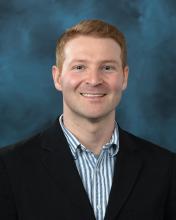
Ryan Spencer
Ryan Spencer has a BS and MS degree in Mechanical Engineering from Southern Illinois University, Carbondale and received his PhD in Mechanical Engineering from the University of Tennessee, Knoxville…

Ryan Spencer
ThermaMatrix
Ryan Spencer has a BS and MS degree in Mechanical Engineering from Southern Illinois University, Carbondale and received his PhD in Mechanical Engineering from the University of Tennessee, Knoxville. He has focused on the characterization and nondestructive testing (NDT) for advanced composites and additive manufacturing with multiple collaborations with ORNL. He has over 10 years experience with R&D within the NDT field, which includes proficient knowledge of ultrasound testing, acoustic emission, vibration analysis, infrared thermography, and digital image correlation. He has received multiple awards including the 2019 American Society for Nondestructive Testing Mentoring Award, MABE Department Outstanding Graduate Student in Mechanical Engineering, Science Alliance GATE program, and a Certificate of Achievement and Recognition from ORNL’s Composites Science and Technology section.

Project Abstract
At ThermaMatrix, we provide a novel optical inspection technique to characterize a wide range of materials. This includes the measurement of local coefficient of thermal expansion, material directionality/anisotropy, and defect detection such as microcracking. We support the R&D of new materials and the manufacturing process by providing a flexible characterization tool with rapid inspection. All technology is packaged inside an optical inspection module which can be hand-held or attached to any robotic gantry system for maximum inspection capabilities. The key markets we support are the composite, aerospace, and semiconductor industries. Our solution contributes to the quality inspection needs these industries require to ensure the highest standards are met for their customers.
We Are Looking For
- Team members
- Strategic partners
- Government and private funding
Critical Need for This Technology
Manufacturers are in constant search for a faster, adaptable, and cost-effective inspection solution which provides quality assurance for their product. ThermaMatrix provides the inspection technology with faster measurements, highly modular systems at a lower-cost compared to alternative methods.
Competition
Alternative methods which measure the same or similar material properties. These methods include dilatometry, thermomechanical analysis, interferometry, and radiography (Xray CT). Also, defect detection methods within the NDT field.
Key Innovation
A rapid inspection technique which is a cost-effective solution compared to alternative methods.
R&D Status of Product
Continuing technical development to improve overall system with next-generation prototype. Exploring new applications with large-scale demonstrations.
Team Overview
- Ryan Spencer – Founder and Chief Executive Officer
ORNL PI
- Ahmed Hassen – Group Leader, Composites Innovation, Energy Science and Technology Directorate
- Hsin Wang – Group Member, nuclear Energy Materials Microanalysis, Physical Sciences Directorate
Ryan Spencer has a BS and MS degree in Mechanical Engineering from Southern Illinois University, Carbondale and received his PhD in Mechanical Engineering from the University of Tennessee, Knoxville. He has focused on the characterization and nondestructive testing (NDT) for advanced composites and additive manufacturing with multiple collaborations with ORNL. He has over 10 years experience with R&D within the NDT field, which includes proficient knowledge of ultrasound testing, acoustic emission, vibration analysis, infrared thermography, and digital image correlation. He has received multiple awards including the 2019 American Society for Nondestructive Testing Mentoring Award, MABE Department Outstanding Graduate Student in Mechanical Engineering, Science Alliance GATE program, and a Certificate of Achievement and Recognition from ORNL’s Composites Science and Technology section.

Project Abstract
At ThermaMatrix, we provide a novel optical inspection technique to characterize a wide range of materials. This includes the measurement of local coefficient of thermal expansion, material directionality/anisotropy, and defect detection such as microcracking. We support the R&D of new materials and the manufacturing process by providing a flexible characterization tool with rapid inspection. All technology is packaged inside an optical inspection module which can be hand-held or attached to any robotic gantry system for maximum inspection capabilities. The key markets we support are the composite, aerospace, and semiconductor industries. Our solution contributes to the quality inspection needs these industries require to ensure the highest standards are met for their customers.
We Are Looking For
- Team members
- Strategic partners
- Government and private funding
Critical Need for This Technology
Manufacturers are in constant search for a faster, adaptable, and cost-effective inspection solution which provides quality assurance for their product. ThermaMatrix provides the inspection technology with faster measurements, highly modular systems at a lower-cost compared to alternative methods.
Competition
Alternative methods which measure the same or similar material properties. These methods include dilatometry, thermomechanical analysis, interferometry, and radiography (Xray CT). Also, defect detection methods within the NDT field.
Key Innovation
A rapid inspection technique which is a cost-effective solution compared to alternative methods.
R&D Status of Product
Continuing technical development to improve overall system with next-generation prototype. Exploring new applications with large-scale demonstrations.
Team Overview
- Ryan Spencer – Founder and Chief Executive Officer
ORNL PI
- Ahmed Hassen – Group Leader, Composites Innovation, Energy Science and Technology Directorate
- Hsin Wang – Group Member, nuclear Energy Materials Microanalysis, Physical Sciences Directorate

